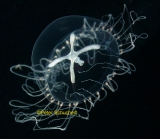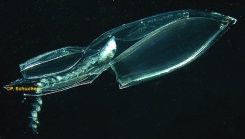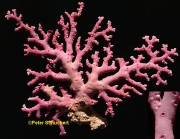Scheldt species taxon details
Hydrozoa
- Subclass Hydroidolina
marine, brackish, fresh, terrestrial
recent + fossil
Owen, R., 1843. Lectures on the comparative anatomy and physiology of the invertebrate animals., available online at https://archive.org/stream/lecturesoncompar00owe#page/82/mode/2up [details]
Scheldt species (2025). Hydrozoa. Accessed at: https://scheldemonitor.nl/speciesregister/aphia.php?p=taxdetails&id=1337 on 2025-09-11
VLIZ Consortium. Scheldt Species Register. Hydrozoa. Accessed at: https://scheldemonitor.be/speciesregister/aphia.php?p=taxdetails&id=1337 on 2025-09-11
Date
action
by
2004-12-21 15:54:05Z
created
db_admin
original description
Owen, R., 1843. Lectures on the comparative anatomy and physiology of the invertebrate animals., available online at https://archive.org/stream/lecturesoncompar00owe#page/82/mode/2up [details]
additional source Cartwright, P., & Collins, A. G. 2007. Class Hydrozoa. in: Daly, M., Brugler, M. R., Cartwright, P., Collins, A. G., Dawson, M. N., France, S. C., McFadden, C. S., Opresko, D. M., Rodriguez, E., Romano, S., & Stake, J. 2007. The phylum Cnidaria: A review of phylogenetic patterns and diversity 300 years after Linnaeus. Zootaxa 1668: 127-182., available online at http://www.mapress.com/zootaxa/2007f/z01668p182f.pdf
page(s): 153 [details] Available for editors
status source Collins, A. G. (2009). Recent insights into cnidarian phylogeny. <em>Smithsonian Contributions to the Marine Sciences.</em> 38: 139-149. [details]
additional source Cartwright, P., & Collins, A. G. 2007. Class Hydrozoa. in: Daly, M., Brugler, M. R., Cartwright, P., Collins, A. G., Dawson, M. N., France, S. C., McFadden, C. S., Opresko, D. M., Rodriguez, E., Romano, S., & Stake, J. 2007. The phylum Cnidaria: A review of phylogenetic patterns and diversity 300 years after Linnaeus. Zootaxa 1668: 127-182., available online at http://www.mapress.com/zootaxa/2007f/z01668p182f.pdf
page(s): 153 [details] Available for editors
status source Collins, A. G. (2009). Recent insights into cnidarian phylogeny. <em>Smithsonian Contributions to the Marine Sciences.</em> 38: 139-149. [details]
 Present
Present  Inaccurate
Inaccurate  Introduced: alien
Introduced: alien  Containing type locality
Containing type locality
| Language | Name | |
|---|---|---|
| Dutch | hydroïdpoliepenhydroïden | [details] |
| English | hydrozoanshydromedusaehydroids | [details] |





